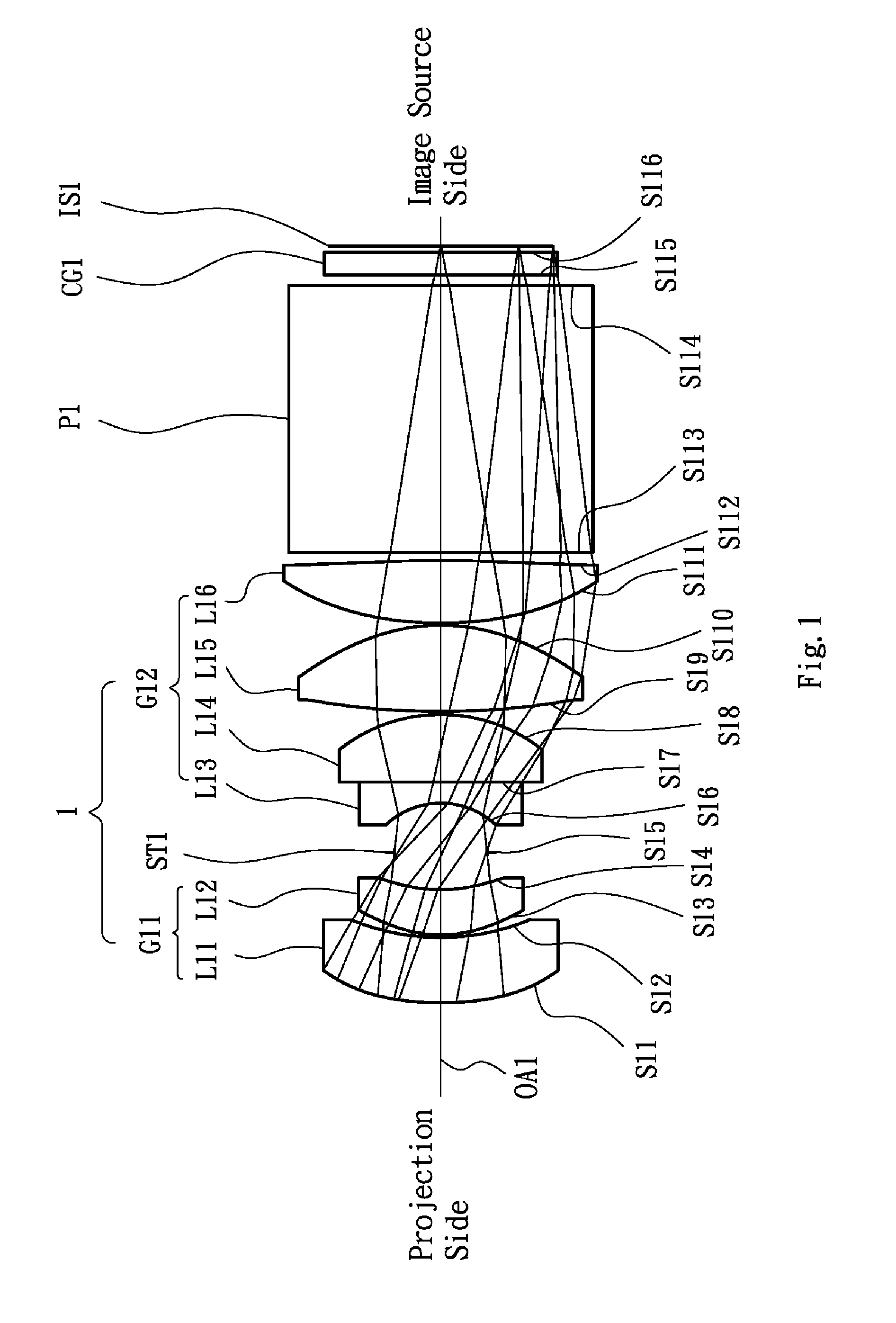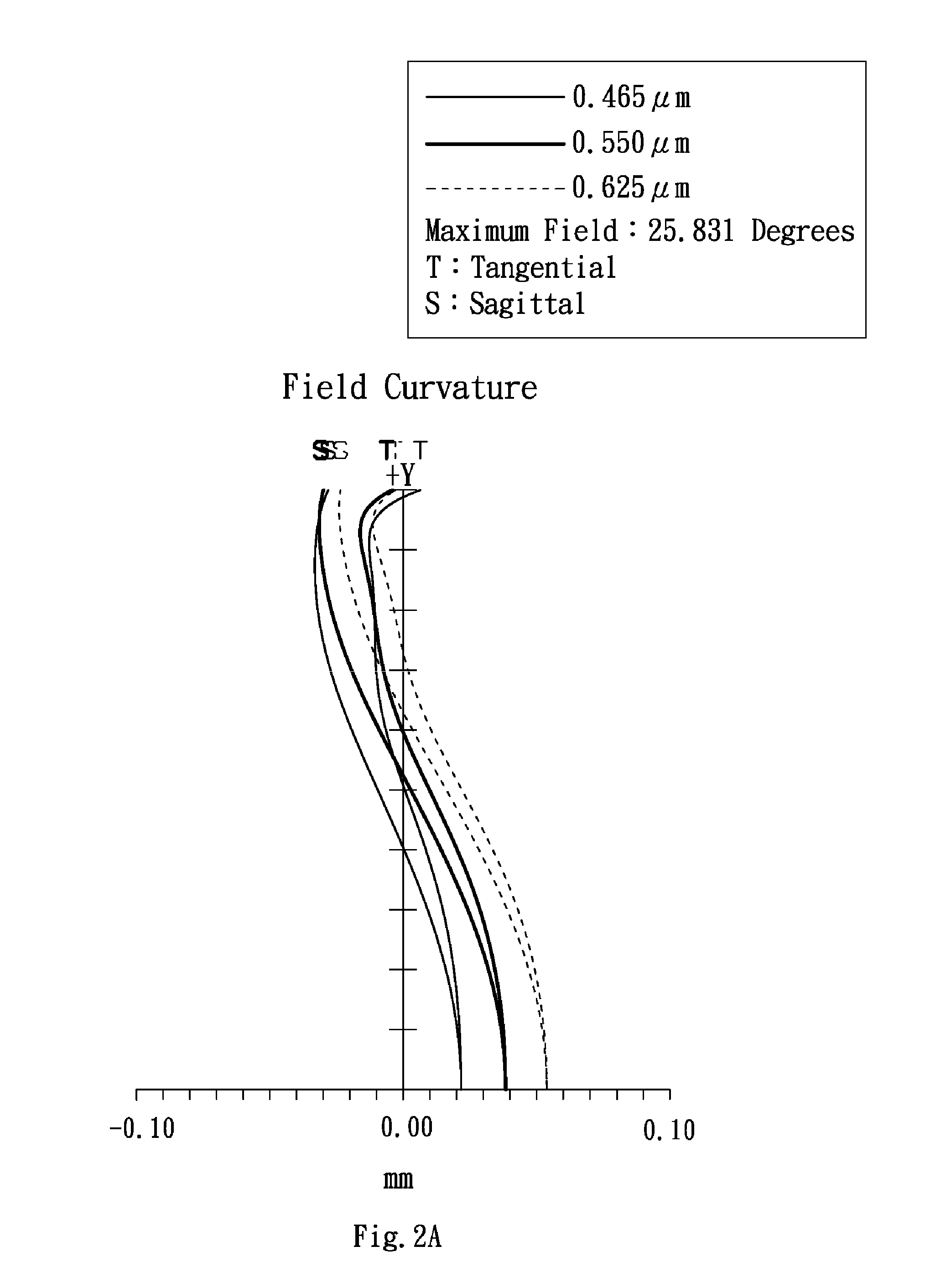Projection Lens
- Summary
- Abstract
- Description
- Claims
- Application Information
AI Technical Summary
Benefits of technology
Problems solved by technology
Method used
Image
Examples
first embodiment
[0044]Referring to FIG. 1, FIG. 1 is a lens layout and optical path diagram of a projection lens in accordance with the invention. The projection lens 1 includes a first lens group G11, a stop ST1 and a second lens group G12, all of which are arranged in sequence from a projection side to an image source side along an optical axis OA1. In operation, light rays from an image source IS1 are projected on the projection side. The first lens group G11 is with positive refractive power and includes a first lens L11 and a second lens L12, all of which are arranged in sequence from the projection side to the image source side along the optical axis OA1. The first lens L11 is a convex-concave lens with negative refractive power, made of plastic material and includes a convex surface S11 facing the projection side and a concave surface S12 facing the image source side, wherein both of the convex surface S11 and concave surface S12 are aspheric surfaces. The second lens L12 is a convex-concave...
second embodiment
[0055]Referring to FIG. 3, FIG. 3 is a lens layout and optical path diagram of a projection lens in accordance with the invention. The projection lens 2 includes a first lens group G21, a stop ST2 and a second lens group G22, all of which are arranged in sequence from a projection side to an image source side along an optical axis OA2. In operation, light rays from an image source IS2 are projected on the projection side. The first lens group G21 is with positive refractive power and includes a first lens L21 and a second lens L22, all of which are arranged in sequence from the projection side to the image source side along the optical axis OA2. The first lens L21 is a convex-concave lens with negative refractive power, made of plastic material and includes a convex surface S21 facing the projection side and a concave surface S22 facing the image source side, wherein both of the convex surface S21 and concave surface S22 are aspheric surfaces. The second lens L22 is a convex-concave...
third embodiment
[0065]Referring to FIG. 5, FIG. 5 is a lens layout and optical path diagram of a projection lens in accordance with the invention. The projection lens 3 includes a first lens group G31, a stop ST3 and a second lens group G32, all of which are arranged in sequence from a projection side to an image source side along an optical axis OA3. In operation, light rays from an image source IS3 are projected on the projection side. The first lens group G31 is with positive refractive power and includes a first lens L31 and a second lens L32, all of which are arranged in sequence from the projection side to the image source side along the optical axis OA3. The first lens L31 is a convex-concave lens with negative refractive power, made of plastic material and includes a convex surface S31 facing the projection side and a concave surface S32 facing the image source side, wherein both of the convex surface S31 and concave surface S32 are aspheric surfaces. The second lens L32 is a convex-concave...
PUM
 Login to View More
Login to View More Abstract
Description
Claims
Application Information
 Login to View More
Login to View More - R&D
- Intellectual Property
- Life Sciences
- Materials
- Tech Scout
- Unparalleled Data Quality
- Higher Quality Content
- 60% Fewer Hallucinations
Browse by: Latest US Patents, China's latest patents, Technical Efficacy Thesaurus, Application Domain, Technology Topic, Popular Technical Reports.
© 2025 PatSnap. All rights reserved.Legal|Privacy policy|Modern Slavery Act Transparency Statement|Sitemap|About US| Contact US: help@patsnap.com



